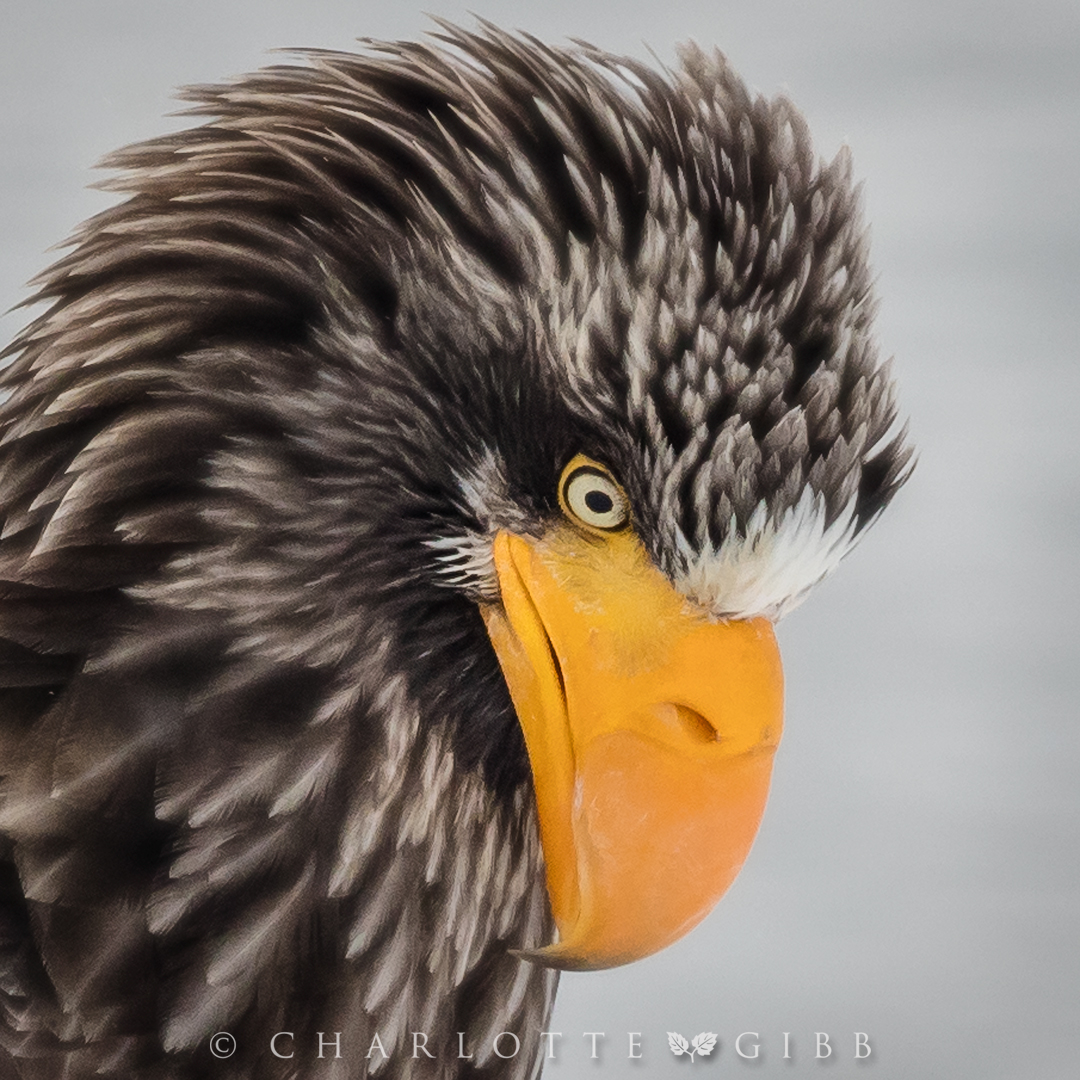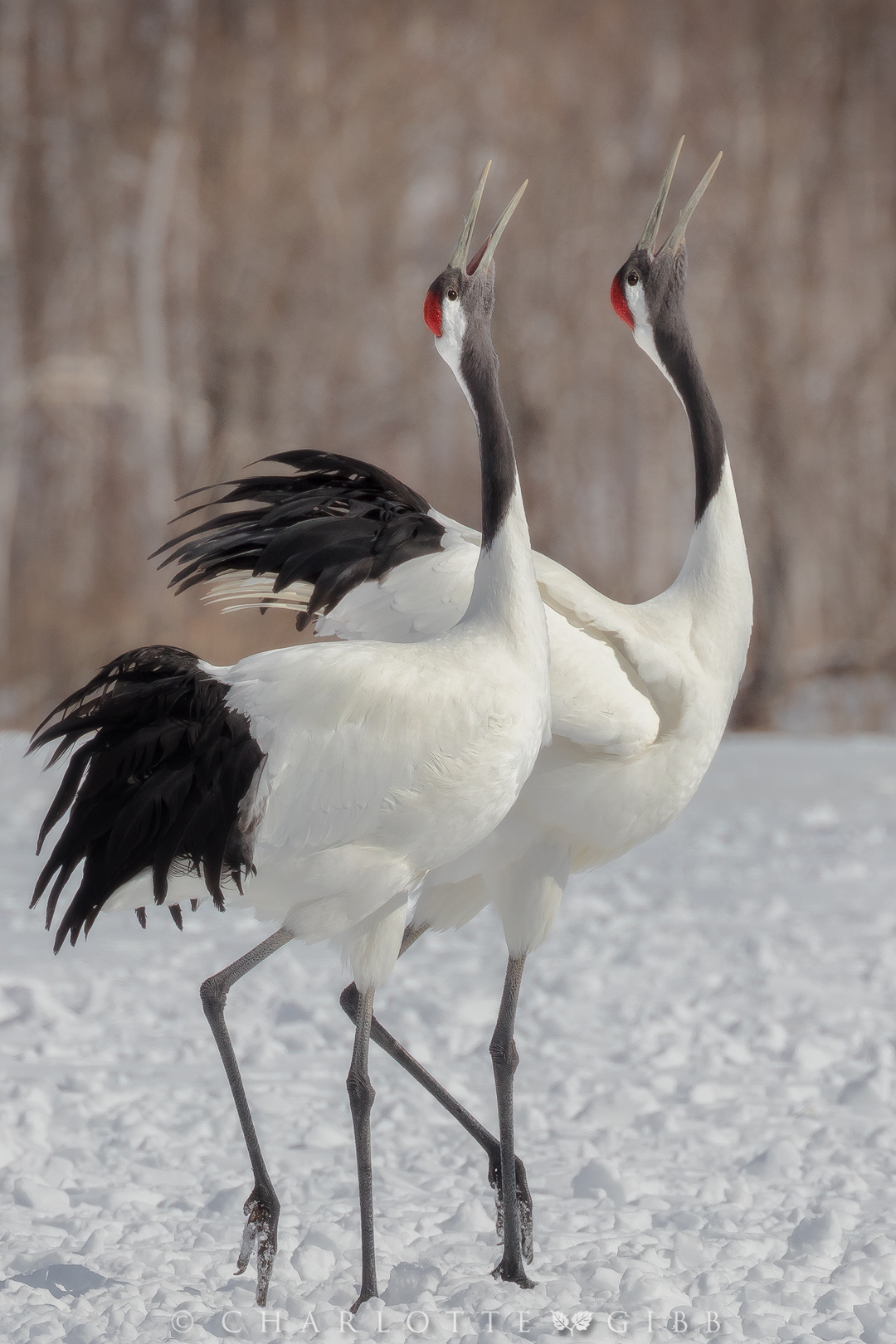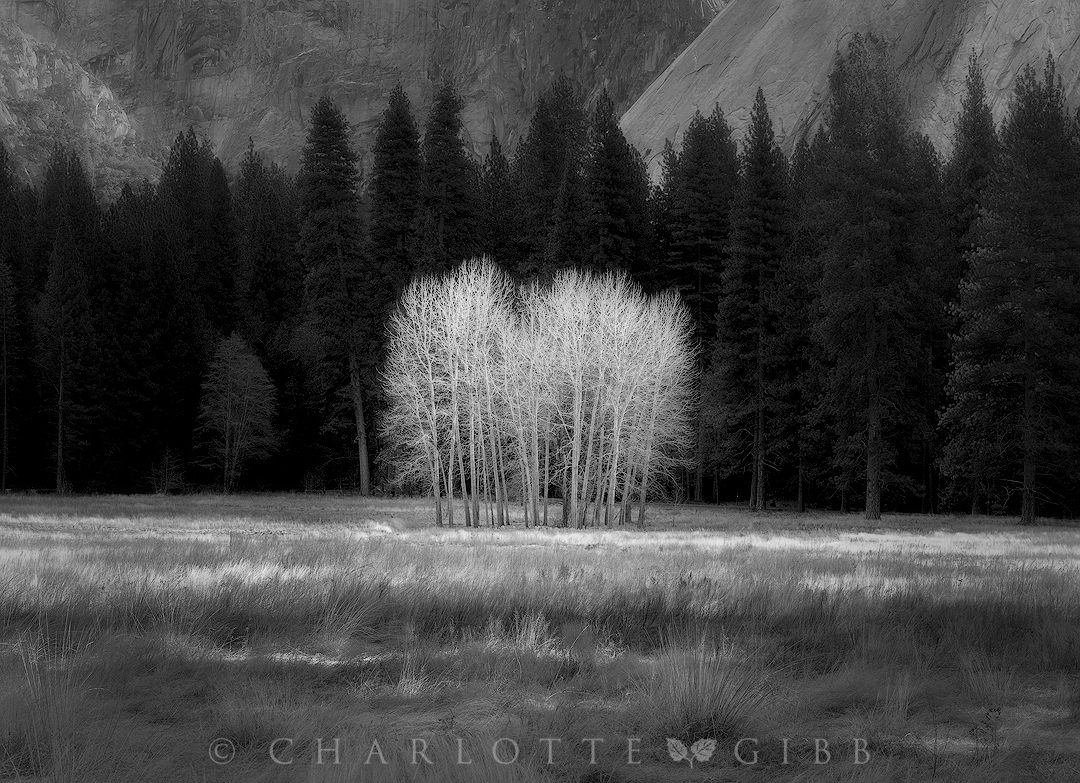
Could Yosemite’s iconic “Ahwahnee Meadow Cottonwoods” be Aspen trees instead?
I recently made another series of photos of the Ahwahnee Meadow Cottonwoods in Yosemite Valley. I’ve photographed this cluster of trees, commonly called “The Ahwahnee Meadow Cottonwoods,” many times spanning several years. A few days ago, I posted a new photo of the trees. A friend, a biologist and someone whose opinion I respect, suggested that these trees might actually be Aspen, not Cottonwood. I had often pondered the same question. So, I promised to make a closer inspection upon my next visit to the trees, which just happened to be this week.
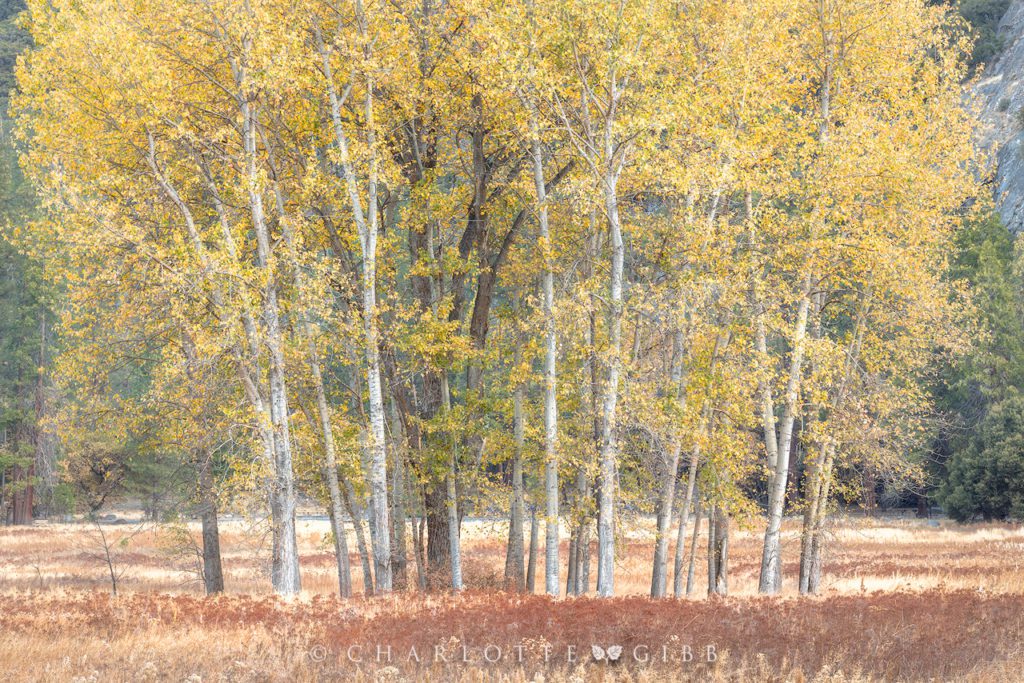
Identifying from a distance
The National Park Service understandably prohibits people from tromping through the Ahwahnee Meadow, so I could only study the trees from a distance. I used a long, telephoto lens from my position on the path to get a closer look. A tree’s size, habitat, range, flowers, bark, and leaves are each important clues to its identity, but blossoms are only observable in Spring, and it is currently late Autumn. So, no blossoms. Even so, a few yellow leaves were still clinging to mostly bare branches, which is important for identification.
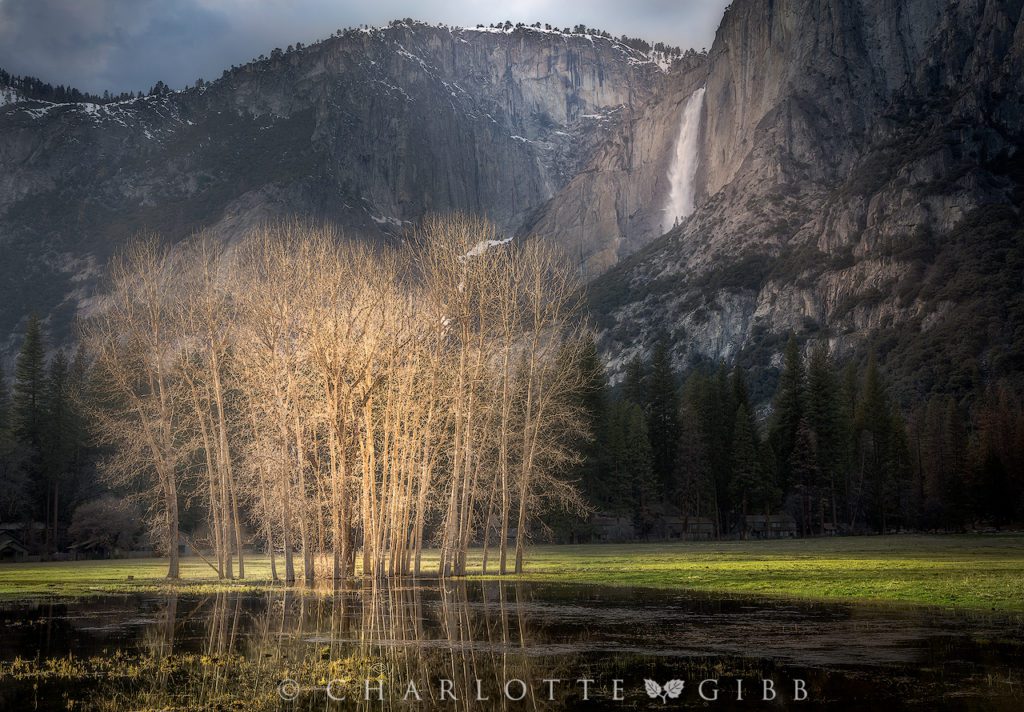
Location is a clue
Aspen and Cottonwood are both from the genus Populus, so there are similarities between the two. Although they are cousins and share some general characteristics, there are key differences. Aspen prefer to grow on dry, rocky hillsides, which is why you find them along the Eastern slope of the Sierra Nevada mountain range. Cottonwoods prefer to grow in soils that receive regular moisture, such as near meadows or along rivers banks and streams. Cottonwoods can be found on both the East and West sides of the Sierra. However, Aspen are rarely found on the West side, which receives more precipitation than the dryer Eastern Sierra, where Aspen are much more abundant.
In addition, Aspen grow at higher elevations, from 6,500 to 10,000 feet. Yosemite Valley sits at 4,000 ft. elevation on the Western side of the Sierra. There are a few Aspen groves in the park at higher elevations. They can be found on the Tioga Road and Glacier Point Road along a path near Badger Pass ski resort. As far as I know, there aren’t any Aspen groves in Yosemite Valley.

Studying the bark
The middle, older tree at the center of the grove is definitely a Cottonwood. It has the signature dark brown, deeply grooved bark that one would expect in a mature Cottonwood. It has a wide crown, with thick, heavy branches.
I’m pretty certain that the surrounding, less mature trees, are also Cottonwood. When they are young, Cottonwood trees have light colored bark with horizontal banding, very similar to Aspen. They don’t develop the darker, vertical-ribbed, thick grooved bark until they are much older. If you look closely, you can see that a few of the trees are starting to transition from the more pale bark to the darker bark with vertical lines.
The Ahwahnee Meadow trees are also missing the signature black “eyes” — sometimes also called “beards” — on their trunks, which is a key field mark of their Aspen cousins.
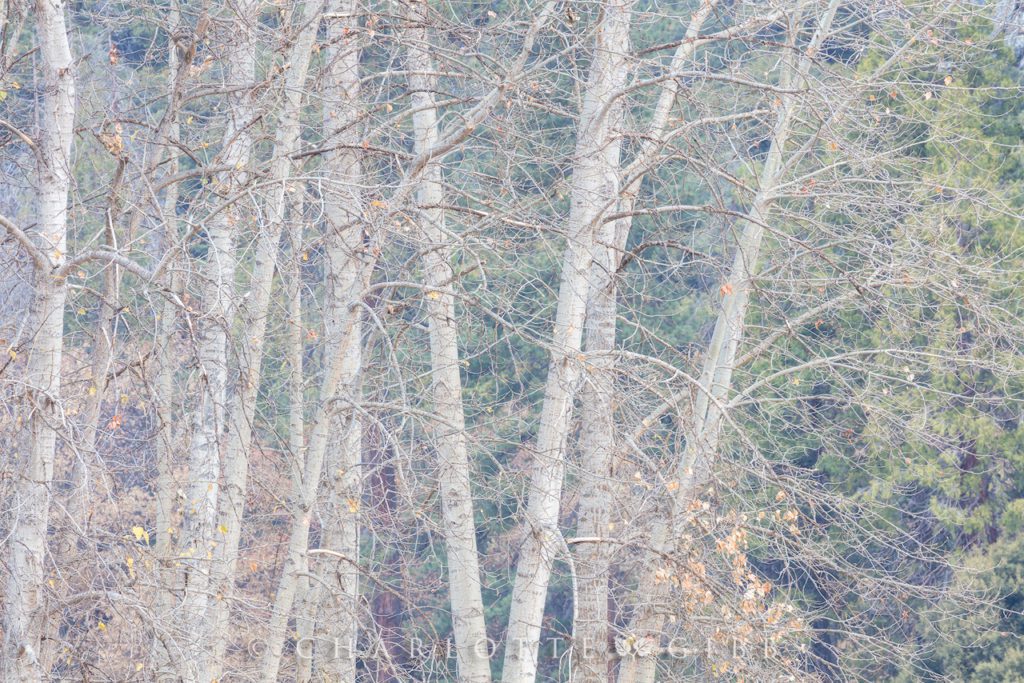

Leaves tell the story
The leaves of the trees in the Ahwahnee Meadow are somewhat triangular shaped, which is typical of Cottonwood. Aspen leaves are more round or heart-shaped.

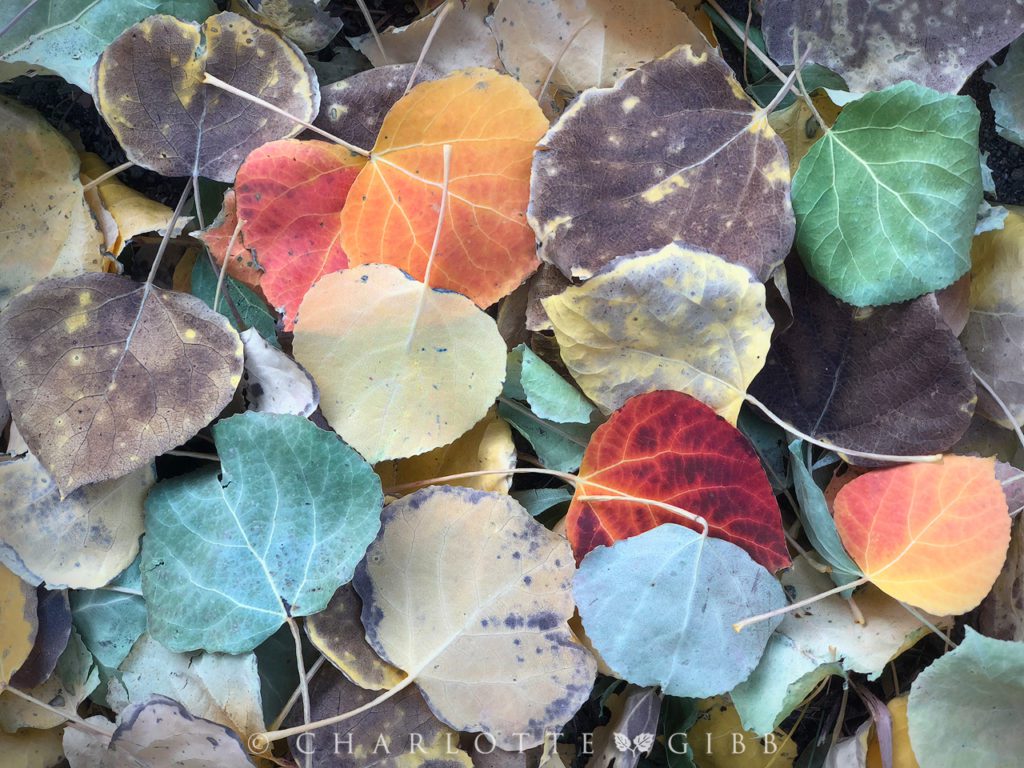
The conclusion
Based on its location, bark, leaves, and habitat, I’m pretty certain that these trees are Populus Trichocarpa, or Black Cottonwood.
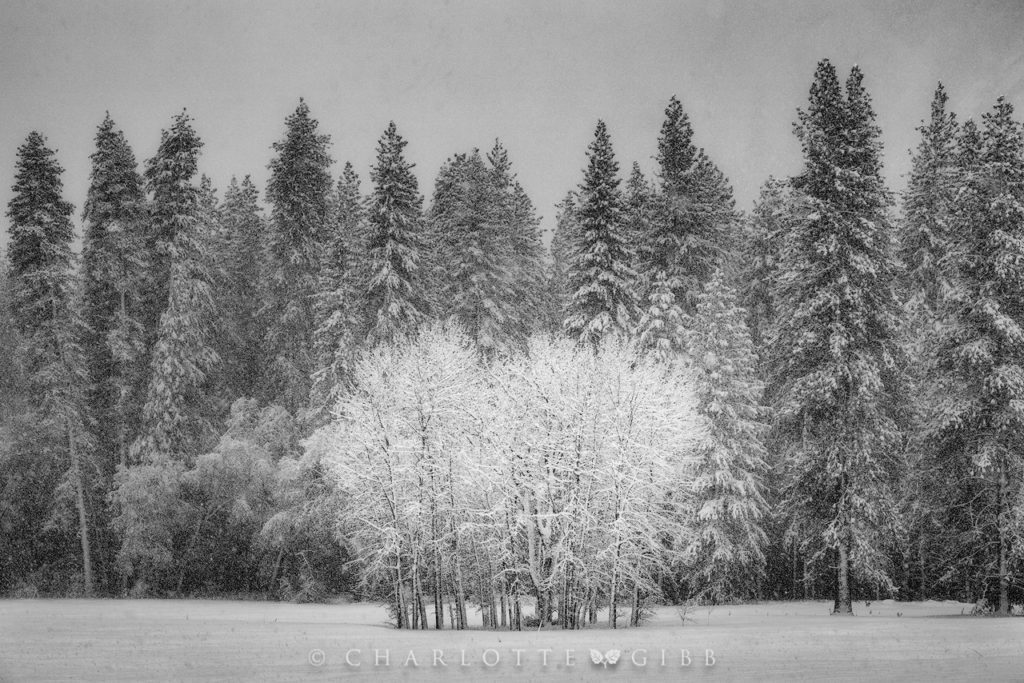
So, what do you think? Aspen or Cottonwood? Or something else entirely?
You can see more of my most recent photographs on my gallery website, https://www.charlottegibb.com/new-releases
charlottegibb
Charlotte Gibb is a contemporary fine art photographer based in the San Francisco Bay Area specializing in landscapes of the Western United States. Her images are often taken in familiar places for the well-versed landscape photographer, but she prides herself on her keen eye toward the subtle and sometimes overlooked beauty of the natural world. Growing up among the beautiful mountains of Northern California, she considers herself a student of life, learning about people, nature, music, and photography along the way. But always, her life-long passion for the wilderness shines through it all. Charlotte earned her Bachelor of Arts degree from the Academy of Art University in San Francisco and has exhibited her work in several solo shows throughout California. Her darkroom, long gone now, has been replaced with digital darkroom tools, and her style has evolved from a somewhat journalistic approach, to one that pays tribute to the natural world.

